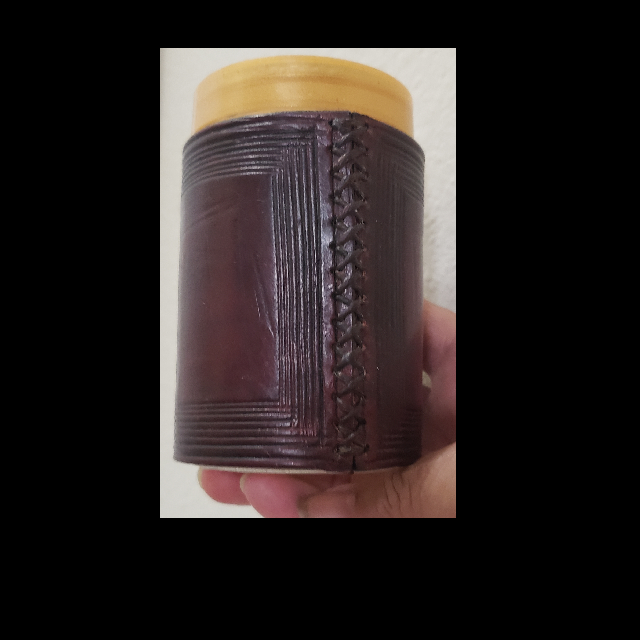-
Posts
1,282 -
Joined
Content Type
Profiles
Forums
Events
Blogs
Gallery
Everything posted by SUP
-
@DieselTech Yes. I'll get the pics ready and put them up here. Will do it within a day or so. Thank you so much all of you..
-
This is my Fruit Fly Trap Coozie - looks so much better than s plastic container with vinegar and dead fruit flies on display!
-
I thought of doing that to an earlier hand-made knife but chickened out. Everything too new for me. Another member here, @AlZilla even gave me some lovely coco bolo wood for it, which is safe. I look at both sideways periodically, trying to get up the courage to do it. But I cannot have that knife and these 3 out of commission. I need to pull up my socks or find someone to put the handles on the knives for me. I just want to be sure that I am not taken for a ride.
-
I'll put up pics this evening. Its Saturday morning - weekly shopping etc. time. I will be able to respond to any comments here at the same time.
-
This week, three of my old knives have loosened or cracked handles. I am really miffed about it. The blades are fine. Is there anything that I can do? Or will I need a cutler or bladesmith? One of them, a Henckel, has a beautiful ebony handle that I am loathe to replace. I have cleaned it and kept it aside. I plan to call the company to ask if they have any suggestions. On another, the handle is completely cracked and will need replacement. That is a Rose, probably pre-1916. The third, a Dixon, the handle has come off and can be replaced or the same used, if possible. As much as possible, I like to keep things as is. I've been looking online and see plenty of ready-made handles - no idea of quality or even how to select the appropriate size. Any guidance is much appreciated.
-
Yep. That's the one @Wepster. Has anyone used it and is it any good? That's what I am wondering.
-
That's okay.
-
It is an electrical machine. Is that what you are talking about? The Owden hand held rollers I have as well and like them. It appears Tandy no longer produces these.
-
Where did you find the Owden edge dye roller machine? I can't find it on Amazon. I like Owden products.
-
@fredk I wish we had something like that here. I'm sure most people would not mind the 5% increase in taxes. But the insurance lobbies and their political lackies will not allow it. Now getting out of this topic before people jump on me about it!
-
@Double Daddy thank you.
-
Craftool Pro Edge Dye Roller machine. I might be able to get one but I am wondering if it works well. Does it use a lot of dye? Is it practical for the hobbyist? I would love to hear from people who are using it or have used it.
-
@Double Daddy, this is a good find. These days I find that often, Amazon does not always have the lowest prices. If it is a couple of dollars difference, I consider it a convenience tax! LOL
-
@BigDogPaul1962 that is a really good comparison of prices that you have done. Thank you for sharing that. I usually go to Tractor Supply Co. and did not realize that Walmart is often cheaper. Now, I will not feel comfortable buying anything without making a similar comparison! LOL.
-
@Handstitched everything has its advantages and disadvantages. Free medical treatment, free education etc. all have their downside as well, just like our paid systems here. Nothing is every really free, is it?
-
What @fredk says is so true. Besides, earlier it was just a matter of what people knew in their own locality and shared with each other. Now, we get knowledge from around the world. They undoubtedly use other products as well, do things in other ways. There is so much to learn, so much more to know.
-
@fredk I agree. @bruce johnson that's true. I am beginning to think that oils from recent organic sources - animal and plant oils - penetrate better and therefore give better lubrication, while extracts from long ago organic sources - fossil fuel derivatives - remain more on the surface - ergo the smooth texture, uniform color and water resistance. Differences in organic structure probably. I have forgotten much of my organic chemistry. An organic chemist here might be able to give a better insight. I might be wrong about this as well, so if anyone knows, please correct me.
-
Neatsfoot oil compound seems to be a mix of neatsfoot oil and mineral oils of different types, from the MSDS, not silicones, as many people online seem to insist. Others say it has lanolin and mink oil, both more expensive than pure neatsfoot oil. If it were these two ingredients, the price of Neatsfoot oil compound would be higher than pure Neatsfoot oil, which it is not. Mineral oils and other petroleum derivatives are much cheaper than Neatsfoot oil and bring down the price. I suspect it is as simple as that.
-

Small metal folding tabs for open end watch straps
SUP replied to SteveOz's topic in Leatherwork Conversation
Oh. He's from Australia - of course. In that case, they are probably smaller. He has mentioned mm as well. I should have looked more closely. @SteveOz sorry about that. Since these strap holder staples are from watch straps, they will be a different size from those used for belts. Someone who makes watch straps should best be able to guide you. There are many of them on this site. If they have not spoken up, maybe you could modify your title of the thread to reflect this - if that is possible? -

Small metal folding tabs for open end watch straps
SUP replied to SteveOz's topic in Leatherwork Conversation
The ones I received from 2 different sources, as staples for belt keepers are much more flimsy though - from Tandy and Amazon. His look a lot sturdier than mine and mine are smaller than 1 inch. -

Small metal folding tabs for open end watch straps
SUP replied to SteveOz's topic in Leatherwork Conversation
I see. These are thicker and a little larger than the the belt keeper staples. Hmmm. They might be called something else. -

Small metal folding tabs for open end watch straps
SUP replied to SteveOz's topic in Leatherwork Conversation
The ones you have shown @SteveOz are the same items as those suggested by others here. The manufacturer might be different. . You could check different sellers until you get the exact shape and size that you need. You know what it is called, so that will help. Most leather stores have them in some form.



